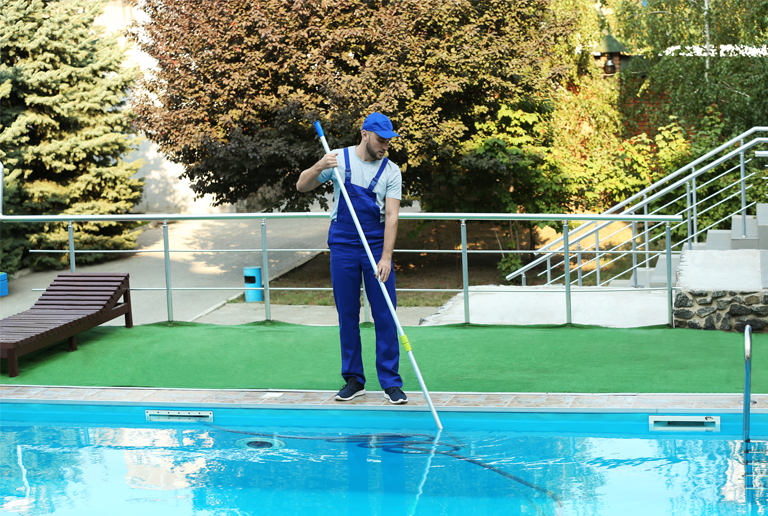
The end of a pool break, especially after a long seasonal hiatus, is an occasion filled with excitement for many homeowners. The azure waters beckon, promising endless hours of fun and relaxation. However, diving straight in without proper preparation can be more harmful than delightful. If your pool has been covered and idle throughout the colder months, certain measures ensure its safety, hygiene, and overall health, readying it for the warmer days ahead. For those also dealing with tents and shade products, understanding how these elements integrate with pool revival is crucial.
Refreshing The Pool’s Waters
The essence of any swimming pool is its water. After a prolonged pool pause, stagnant water can become a breeding ground for algae and microorganisms. It’s essential to drain and replace the water if it’s been sitting for too long. This not only ensures clean, fresh water but also makes subsequent treatments more effective. For larger pools, where draining might be impractical, it’s beneficial to consider diluting the pool by draining a portion of the water and refilling it, which can help in resetting its chemical balance.
Revisiting The Pool’s Chemistry
The chemical balance of your pool’s water is vital for multiple reasons – not only does it ensure that the water is safe for swimming, but it also affects the longevity and appearance of your pool. A pool break can result in altered pH levels, unbalanced chlorine, or other chemical imbalances.
Begin by testing the pool water for its pH, chlorine, and alkalinity levels. Ideal pH levels should hover between 7.4 and 7.6. Depending on the results, you might need to adjust the levels using relevant pool chemicals. Ensure that the chlorine concentration is sufficient to ward off any potential bacterial growth. Alkalinity, calcium hardness, and stabilizer levels should also be on your testing and adjustment list.
Thorough Cleaning Is Essential
After a pool break, especially a seasonal one, it’s not uncommon to find leaves, debris, or even algae in your pool. These not only hamper the water’s clarity but also can introduce various microorganisms to the water.
Start with skimming the surface for floating debris. The pool’s bottom and sides can harbor settled debris, algae, or even stains. Employing a pool vacuum can prove beneficial in this regard. Moreover, brushing the pool’s sides can dislodge stubborn algae or deposits, ensuring a cleaner pool.
Safety First, Always!
Your pool’s health is undeniably essential, but so is the safety of those using it. After a pool break, it’s crucial to inspect all safety installations around your pool. This could range from pool fences to ensure children or pets don’t wander into the pool area unsupervised, to checking the structural integrity of diving boards or ladders.
For those who’ve incorporated tents and shade products around the pool, a safety check is paramount. Ensure these structures are stable, undamaged, and securely anchored. If they’ve been stored away, ensure there’s no wear or tear when reinstalling them. A pool break, be it seasonal or brief, requires diligence upon return. It’s not merely about ensuring your pool looks inviting but making sure it’s safe and healthy for all its users.